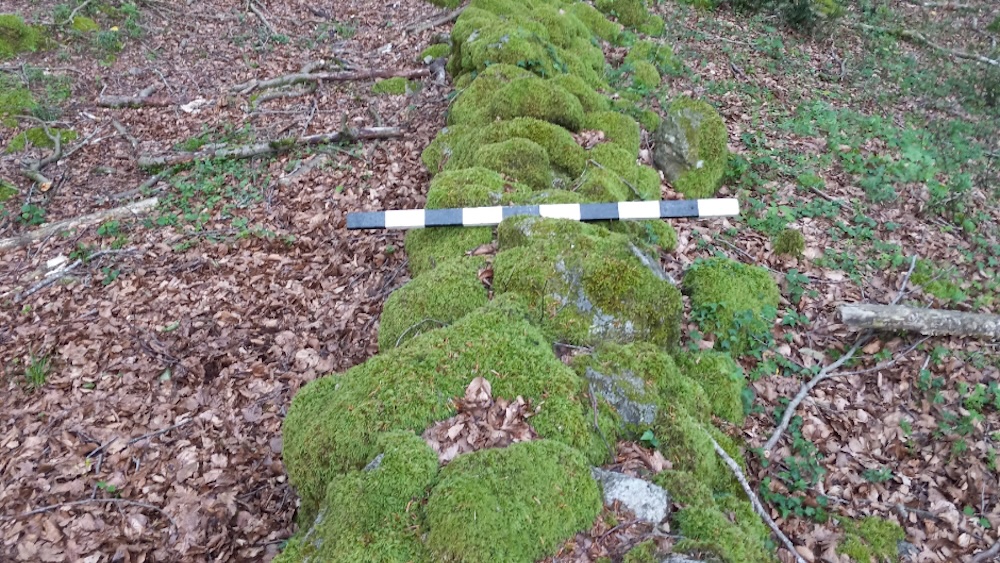
An ancient stone wall hidden in a forest in Italy was once used by Roman forces to corral slave-revolt leader and gladiator Spartacus and his men.
Archaeologists learned about the now-moss-coated wall, which stretches roughly 1.7 miles (2.7 kilometers) long, after a local environmental group tipped them off about the site in the Dossone della Melia forest in Calabria, a region in southern Italy, according to the Archaeological Institute of America (AIA). A team led by University of Kentucky archaeologist Paolo Visonà then used ground-penetrating radar, lidar (lasers shot from an aircraft to map the ground's topography), magnetometry and soil core sampling to study the site.
They found that at one time, a deep ditch ran parallel to the wall — a construction known as a Roman fossa (ditch) and agger (mound) defense system. This type of fortification was often employed by the Romans, including Julius Caesar at the siege of Avaricum in what is now France, according to The University of Chicago.
"The wall is a sort of barrier due to its topographic location and other factors, like the absence of gates," Andrea Maria Gennaro, the archaeology superintendent with Italy's Ministry of Culture who worked on the excavation, told Live Science in an email. "It divides the entire large flat area in two parts."
Archaeologists think the wall was built for security measures, specifically to contain Spartacus, a Thracian gladiator who started the Third Servile War (also known as the Gladiator War), when he and about 70 other enslaved gladiators escaped from a school in Capua. During the rebellion (73 to 71 B.C), Spartacus and his men defeated Roman forces time and again until the gladiator's demise at the Battle of Cantenna.
Related: 1,700-year-old Roman fort discovered in Germany was built to keep out barbarians
As for the newfound wall, "This barrier can be identified as the enclosure/fortification wall erected by [Roman general] Marcus Crassus in 71 B.C. to contain and trap Spartacus and his forces," Gennaro said. "After trying to go to Sicily, Spartacus was not able to move along the coastal roads because of the presence of Romans, so the only way to go [to] the peninsula and escape was crossing Aspromonte," a mountain in Italy.
The construction itself has been mentioned by historical sources — most notably, in the book "The Life of Crassus," written by Greek philosopher and historian Plutarch, Gennaro said.
In addition to the wall, archaeologists unearthed numerous artifacts buried in the soil, including broken iron weapons, such as sword handles, curved blades, javelin points and a spearhead, according to the AIA.
The weapon styles suggest that an epic battle unfolded at the site during that time frame.
"We started studying weapons recovered along the wall, and the closest comparisons are with weapons from the late Republican period," Gennaro said. "We believe we have identified the site of the clash."







